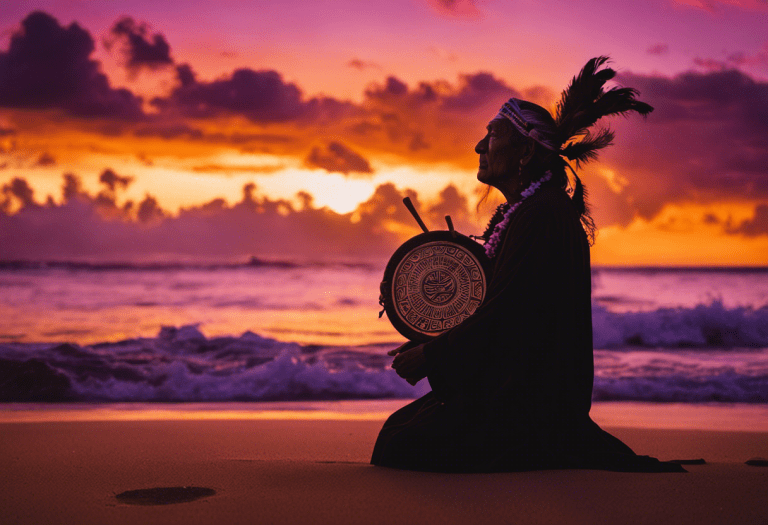Exploring Aka Songs and Chants: A Cultural Legacy Unfolds
Dive into the rhythmic world of aka songs and chants, where every beat tells a story and every melody connects you to a vibrant cultural tapestry. These traditional forms of music are not just entertainment; they’re a powerful expression of identity and history.
You’ve likely heard the captivating sounds of aka chants at festivals or through global music platforms. They’re an auditory journey that transcends language, inviting you to experience the essence of community and the heartbeat of ancient traditions. Get ready to explore the significance and allure behind these enchanting melodies.
The History and Origins of Aka Songs and Chants
You might be curious about how aka songs and chants play such a pivotal role in the cultural legacy they represent. Their roots are deep, stretching back to an era where music was not just for recreation but served as a vital link to heritage and shared stories.
Aka songs have always been the heartbeat of cultural gatherings. These rhythms have echoed through generations, each beat and note a vessel carrying the collective memory of a people. In the dense forests of Central Africa, where the Aka people have thrived for centuries, these songs and chants emerged as central to their way of life.
Historical evidence suggests these songs might date back to the times when humans first formed languages. Aka music is believed to be as old as the tribe itself, with each melody a thread woven into the intricate fabric of their history. The chants often tell tales of ancient battles, rites of passage, and the sacred bond with nature that defines the Aka people’s existence.
The transmission of these songs and chants is an art of its own. Passed down orally from one generation to the next, they are rarely documented in written form. This oral tradition ensures that each rendition is both a repeat and a reinvention, slightly altered by the perspective and vocal style of the performer, yet loyal to its ancestral origins.
Today, these enchanting melodies continue to evolve. Global influences may blend with traditional rhythms, yet the core of Aka music remains unaltered—it’s the spirit of the people, a living, breathing history that defies time’s relentless march.
As you sink into the sounds of aka chants, consider the rich tapestry they unveil—a world where every verse is a brushstroke on the canvas of their culture, every chorus a color vividly representing the Aka people’s journey through history.
Cultural Significance and Symbolism in Aka Music

Aka music isn’t just an entertaining melody; it’s a vital part of the cultural fabric that connects individuals to their past and each other. These songs and chants hold symbolic meanings that run deep.
- Social Connectivity: In Aka communities, music is a social glue. Shared song sessions strengthen communal bonds and reaffirm social structures.
- Historical Narratives: Each song is like a chapter from a history book, but instead of written words, it’s melodies and rhythms that tell the tales of ancestors and landmark events.
- Spiritual Beliefs: Music is often interwoven with spirituality, with certain chants believed to bridge the physical and spiritual worlds, offering a medium for communication with the divine.
Every vocal rise and drop of an Aka chant captures the essence of the tribe’s relationship with the world. These songs are living traditions—dynamic, not static. They evolve, yet carry ancient wisdom, making them compelling for anyone interested in the broader human story.
Music as Identity: For the Aka, their unique sound imprint is a form of identity—a sonic signature that marks where they’ve been and hints at where they’re going. You’ll find that music acts as a marker for identity, connecting individuals with the collective consciousness of their people.
Ethnomusicologists might tell you that Aka music is a powerful storytelling tool, carrying a plethora of cultural codes and conventions unseen to the untrained eye. As an art form, it draws you into participatory experiences. You’re not just observing—you’re a part of something, feeling the pulse of community life through rhythm and song.
These songs are not mere echoes from the past. They’re vibrant, lived experiences that continue to shape the Aka way of life. Participation in these musical experiences ensures that the community thrives and that the legacy of Aka music is seamlessly woven into the fabric of everyday life, symbolizing resilience and the enduring nature of their culture.
Musical Instruments Used in Aka Songs and Chants

The Aka tribes have a profound association with various musical instruments that resonate deeply with their chants and songs. When you listen closely to Aka performances, you’ll notice a diverse array of instruments that add complexity and depth to their music.
The Mbindi is probably the most significant. This small harp-like instrument has strings traditionally made from plant fibers and plays a central role in the rhythm and melody of Aka songs. Not only does the Mbindi produce a distinctive sound, but it also symbolizes the connection between the Aka people and the dense forests in which they live.
Percussion instruments play a crucial part too. Ngombi and Ngwomi, both types of drums, are often heard. They create the pulse and tempo that drive the communal experience of Aka music. Drums aren’t just for keeping time—they’re an invitation to gather, participate, and engage with the stories being told.
Then there’s the Mbela, a thumb piano with metallic tines plucked to produce melodic patterns. Each Mbela is unique, its sound influenced by the size and shape of the instrument, as well as the material of the tines. The Mbela’s tones are a mainstay in the Aka soundscape, weaving through other instrument sounds and human voices seamlessly, knitting together the tapestry of their musical expression.
Flutes and horns, often fashioned from bamboo or animal horns, offer another layer to Aka musical tradition. When you hear an Aka flute, it’s not just a woodwind playing; it’s storytelling. Each breathy note carries with it generations of knowledge and tradition.
While many cultures around the world use similar instruments, in Aka music, they take on unique characteristics and meanings. The way these instruments are played — often with an improvisational style — reflects the spontaneity and freedom that are pillars of Aka society. Every beat, every strum, every note is a snapshot of life, a symbol of their cultural heartbeat.
The Role of Aka Songs and Chants in Community Gatherings

In the midst of everyday life, Aka community gatherings stand out as vibrant hubs where songs and chants are not simply performed but are truly lived experiences. Your understanding of these events would not be complete without grasping the gravity of the music that flows through these social assemblies. Music connects: it’s the heartbeat of the Aka people, synchronizing individual spirits into one harmonious collective.
Imagine yourself among the Aka, surrounded by the lush green of the forest. As a gathering unfolds, the air gradually fills with the resonant call of voices in unison, a testament to the community’s unity and strength. Songs and chants are woven into the fabric of celebrations, ceremonies, and daily life alike, each note a thread in the larger tapestry of tribal identity.
Education through music is a subtle yet profound element of these gatherings. The younger members of the tribe, cradled in the arms of song, absorb knowledge and traditions as naturally as breathing. The melodies serve as vessels carrying stories of ancestors, life lessons, and the sacred law of the forest.
- Music as a means of expression: Members find their voice, their concerns, and joys reflected back at them through the music created and shared.
- Conflict resolution: Chants morph into a form of dialogue, where disputes are aired and resolved against the backdrop of rhythmic harmony.
- Social cohesion: As feet tap and bodies sway, a sense of belonging is reinforced, reaffirming individual roles within the tribe and the collective commitment to each other’s well-being.
Songs and chants act as the social glue for the Aka people, a catalyst for the transformation of a simple meeting into a profound communal experience. Beyond the instruments, the human voice rises as the true conveyer of emotion and history, ensuring that the traditions and collective identity of the Aka tribe continue to thrive with each passing generation.
Contemporary Adaptations of Aka Music

Aka music has taken on new life in the modern era, meshing with contemporary styles while still cherishing its unique roots. As the world shrinks thanks to global connectivity, Aka artists are blending traditional elements with genres like hip-hop, jazz, and reggae. These hybrids reach beyond their local origins, resonating on the global stage and attracting enthusiasts from all corners of the planet.
- Integration with Global Genres: Aka musicians are now collaborating with artists worldwide, infusing their rhythmic patterns and melodies into various musical landscapes.
- Recording and Distribution: Technological advancements have allowed for the recording of Aka songs, ensuring the preservation and wider dissemination of this cultural treasure.
Despite the technological leap, Aka music retains its core purpose of strengthening communal bonds. The music’s evolution hasn’t diluted its cultural significance; rather, it’s become a means of cultural diplomacy, showcasing the Aka people’s heritage to a broader audience.
Influence on Music Worldwide
The influence of Aka music is noticeable as its distinct beats and rhythms lend themselves to multiple music forms. Some key points include:
- Cultural Exchange: Aka music serves as a bridge, fostering cultural exchange and understanding between the Aka people and the rest of the world.
- Inspiration for Contemporary Artists: Musicians and producers often draw inspiration from the intricate polyphonic styles of Aka chants, translating them into their own works.
Delving into the realm of social media, Aka musicians and enthusiasts use these platforms to share their culture. This digital presence not only educates but also inspires conversations around the preservation of indigenous traditions. It’s not just about entertainment; it’s a proud, living testament to a rich cultural lineage that thrives amid modern influences.
Conclusion
Embrace the unique rhythms and stories of Aka songs and chants as they continue to flourish in the global music scene. You’ve seen how they’ve woven into contemporary genres, creating a rich tapestry of sound that resonates across cultures. As you explore the digital landscape, you’ll find Aka music not only preserving tradition but also sparking dialogue and connection. Let’s celebrate this dynamic evolution that honors the past while embracing the future, ensuring the Aka community’s voice echoes for generations to come.







